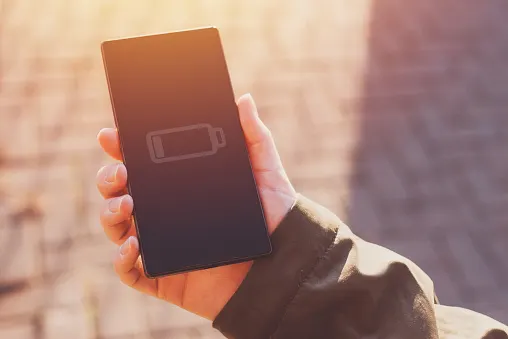
A cold phone is a dying phone: Avoid battery damage in icy weather
(dpa) - Lithium batteries - they power the devices we use every day: our smartphones, laptops, Bluetooth speakers, e-bikes and countless other gadgets that need electricity.
The problem: They're prone to rapidly draining and losing capacity when temperatures turn low. In fact, you've probably already noticed that your phone doesn't last as long if you use it outdoors in freezing weather.
RELATED: 9-volt battery power outage hacks you should use
In icy temperatures, the battery level drops as if you're constantly in video chat, even when you're not using your phone. In in the worst case, your phone will simply switch itself off to protect the battery from lasting damage.
Many amateur photographers will have experienced something similar with their camera and have been forced to end snow sessions prematurely.
What's happening is that the electrochemical processes within the battery are slowing down in the cold, according to battery specialists from inspection agency Tuev.
When the electrolyte fluid becomes harder in the cold, the internal resistance of the mobile phone battery increases, which means higher power consumption, which in turn leads to a drop in voltage and, ultimately, a rapidly draining battery.
The optimal operating temperature for most smartphones is between 0 and 35 degrees Celsius. Temperatures outside this range will only damage your smartphone.
But that's not the only reason you'll want to keep your phone out of the cold. It can also have a negative effect on screens in smartphones, cameras and the like.
Since the liquid crystals in LCD displays freeze at sub-zero temperatures, you may notice sluggish response times, or even no reaction at all when you touch them. Colour display and illumination could also be weakened.
WATCH BELOW: HAS YOUR POWER GONE OUT? HERE ARE SOME GREAT USES FOR A 9-VOLT BATTERY
To keep the smartphone within its ideal operating temperature range even in freezing cold, you need to keep it as close to your body as possible. The inner pocket of a jacket can be good here, or alternatively your trouser pocket.
If you're planning regular outdoors activities in sub-zero conditions, then a thermal cover - for example made of neoprene - can also be useful as additional protection.
If you can avoid it, try not to pull your phone out as often, and use a headset for phone calls. But remember, if you have wireless earbuds, then the battery in these is also at risk.
Another good reason to keep electronic devices warm is the possible consequences of an abrupt change in temperature when you come into a warm room with the ice-cold device. Condensation can then form, which in the worst case can lead to short circuits or corrosion inside the appliance.
If the unit does get ice-cold, for example during a walk, it is advisable to switch it off and leave it in your jacket pocket for 30 to 60 minutes to warm up slowly. Under no circumstances should you put it on the radiator.










